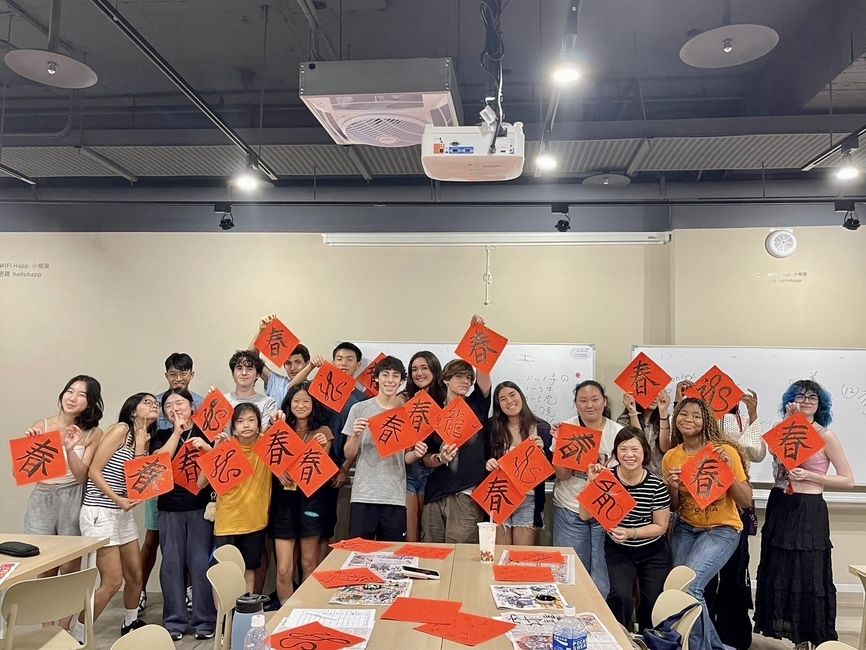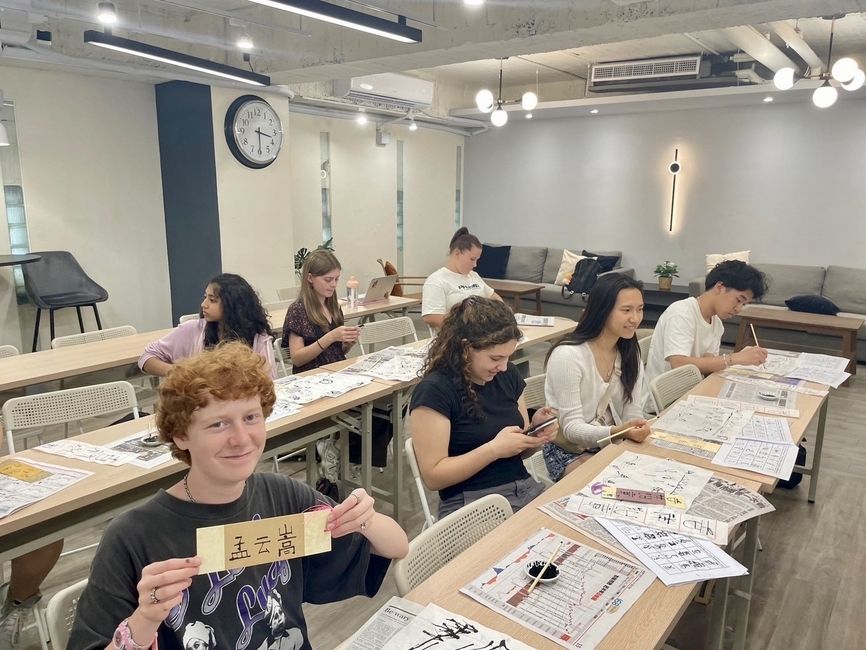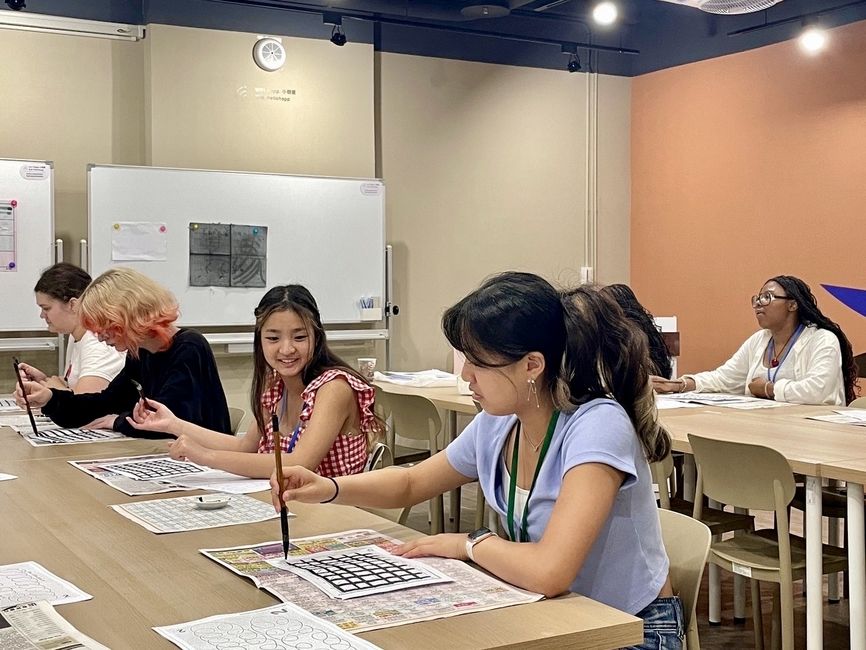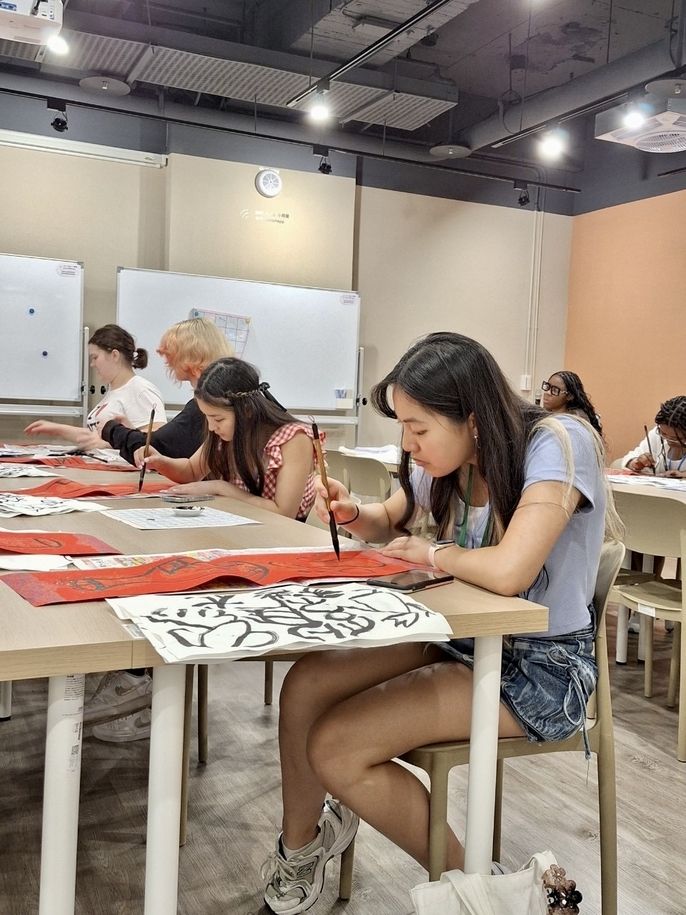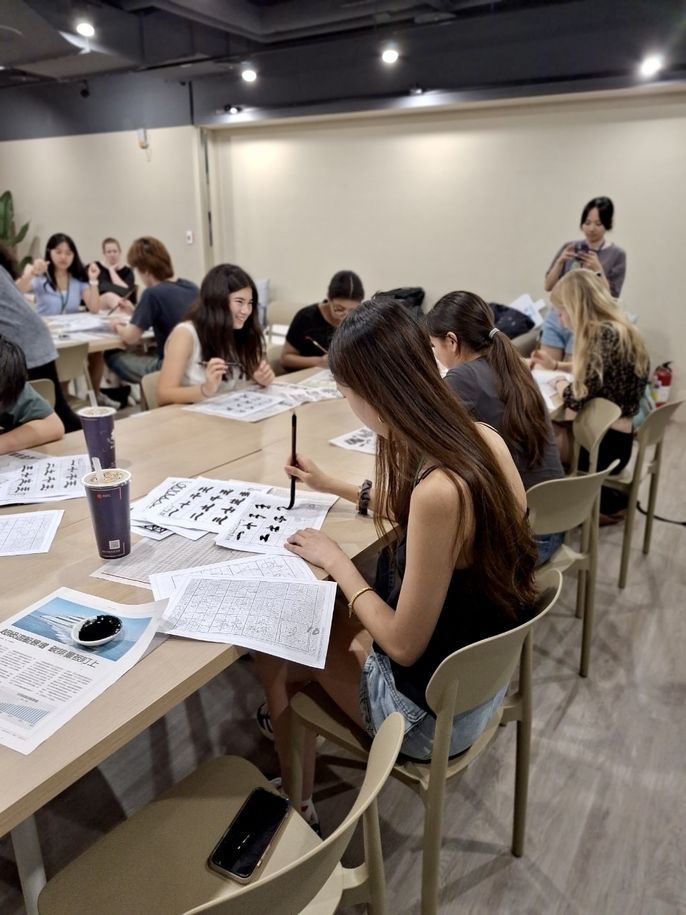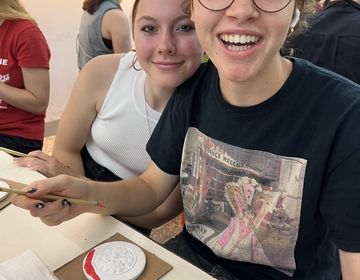A Journey into Calligraphy: American High School Students' Chinese Character Exploration in Taiwan
This summer, a group of American high school students embarked on a cultural exploration journey to Taiwan to learn Chinese. They not only studied the language but also delved deeply into traditional Chinese culture. Among their various experiences, the calligraphy class emerged as a highlight of their trip.
Exploring Chinese Characters: Starting with Oracle Bone Script
On the first day of the calligraphy class, the students were introduced to the origins of Chinese characters: oracle bone script. These ancient characters, carved onto turtle shells and animal bones, are the earliest recorded form of Chinese writing. The teacher provided a detailed overview of the historical context, structural features, and the role of the oracle bone script in ancient society. The students were amazed to discover that many modern Chinese characters’ shapes and meanings could be traced back to these ancient symbols.
Learning Kaishu and Xingshu
Next, the students began learning Kaishu (regular script) and Xingshu (semi-cursive script). Kaishu, also known as regular script, is the most fundamental and standard form of Chinese calligraphy. The teacher patiently taught the students how to hold and maneuver the brush, demonstrating each character stroke by stroke. The students diligently practiced, gradually mastering the techniques of Kaishu.
Xingshu, a script that lies between the formality of Kaishu and the fluidity of cursive script, offered the students a chance to experience the dynamic and aesthetic aspects of Chinese calligraphy. Unlike the strict and upright nature of Kaishu, Xingshu allowed the students to express their individuality and emotions through their brushwork. Through this process, the students began to appreciate calligraphy not just as a writing technique but as an art form.
Writing the Chinese Zodiac and the Character "Spring"
After mastering the basics of calligraphy, the students participated in a fun and meaningful activity: writing the twelve Chinese zodiac characters and the character for "Spring." They first learned about the cultural significance of the Chinese zodiac and the importance of spring couplets during the Lunar New Year, which bring blessings and good fortune.
Each student chose a zodiac character or the character for "Spring" to practice. Some focused on writing characters like "Rat," "Ox," and "Tiger," while others dedicated their efforts to perfecting the "Spring" character. This activity not only deepened their understanding of Chinese culture but also allowed them to enjoy the creative process of calligraphy.
The Cultural Experience and Its Impact
This calligraphy journey gave the American high school students a profound understanding of Chinese characters. They learned not only how to write Chinese characters but also appreciated the rich cultural heritage behind them. Through hands-on experience, the students realized that calligraphy is not merely a writing skill but also a form of mental cultivation and cultural transmission.
The students expressed that the calligraphy classes had been incredibly inspiring. They recognized the importance of understanding cultural context in the process of learning a new language. Calligraphy, as an integral part of traditional Chinese culture, helped them grasp the deeper meanings of the Chinese language.
This trip to Taiwan was an unforgettable cultural exploration journey for the American high school students. The calligraphy classes enriched their language learning experience and allowed them to engage with the unique charm of Chinese culture. The students returned to the United States with a sense of accomplishment and a deeper appreciation for Chinese calligraphy. This journey will undoubtedly remain a cherished memory in their lives. No matter where they go in the future, this exploration of Chinese characters will leave a lasting impression on their hearts.
Related Posts
How I Studied Abroad as a Freshman in High School
Thinking about what to do the summer after your freshman year? Check out how one of our alumni studied abroad in Taipei, Taiwan at such a young age and how you can too!
Exploring the Rich Culture of Tainan: An American Students' Journey
In a rapidly globalizing world, experiencing diverse cultures has become an essential part of education. For a group of American students, a two-day and one-night trip to Tainan, Taiwan, offered... keep reading
Learning Made Sweet and Fun: Baking the Famous Pineapple Cake
This afternoon's cultural activity was one of my favorites! We enjoyed a refreshing break from the heat, learning how to bake pineapple cake. The students had a blast baking and... keep reading
